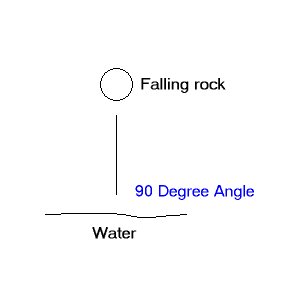
If I were to ask 10,000 people if they knew what precession is, I will be lucky to get one correct answer. And yet it is precisely the way the universe operates. Precession is, very simply put, the relation between one object and another. Take planet Earth, for example. Our planet revolves around the sun in a precessional orbit, in other words, at a 90 degree angle from the sun.
When we walk down the street, we are precessing planet earth at a 90 degreeness in relation to it. When a rock is dropped into a still pond, that rock precesses the water until it impinges upon the surface. Then, a series of waves will propagate at a 90 degreeness to the point of impact. This is a very good example of precession.

Precession makes the universe probable instead of deterministic. Looking at the above diagram of a rock dropping into water, at the point of dynamic impact (DQ), it will produce a series of propagating ripples through the static water (SQ) at a 90 degree angle from the point of impact.
Thinking in 2 dimensional terms, this means that there are 2 possibilities for every DQ event, but reality is 3 dimensional, and now all of a sudden we are faced with a near infinite possible numbers of possibilities. This is the old multiple minimal problem that gave SOM such fits trying to solve.
This is an expected reaction however in our MoQ wimple model. It can be clearly illustrated by imagining the ripples going through the water in a 3 dimensional fashion rather than simply across its surface.
The problem is solved using Pirsig' MoQ to plug into the model. That is the whole key to solving many many platypi that abound within SOM.